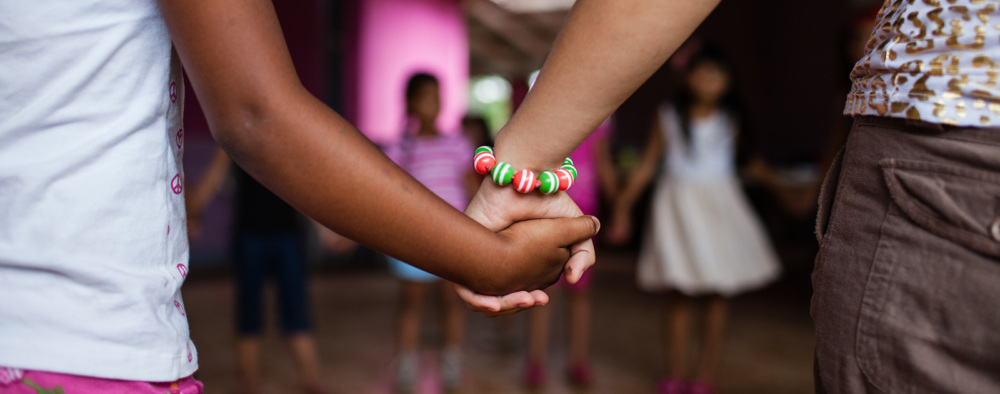
Safety and wellbeing
Safety and wellbeing
Confession time. I have delayed writing this piece for a while.
For more than two years, GFC has been working hard on establishing norms, protocols, and culture shifts in support of child safeguarding – our commitment to upholding and protecting the rights of the child.
Peers and friends of GFC often comment that the way we serve our partners in this space is unique, and they want to know more about how we do it – I knew it was time to take a moment to reflect on what we have learned.
But then the coronavirus epidemic took over.
Given the current global crisis we are living in, I didn’t feel the time was right to write this reflection. Who cares what one organization has experienced in safeguarding when the world feels overwhelming and confusing? We are all just trying to survive right now and get through the daily grind.
Yet, the reality is, operating within a safeguarding culture and framework has never felt more relevant, and important.
When the world’s view shifts to something unprecedented, those who are vulnerable find themselves further isolated from help.
Children are forced to be at home with the perpetrators of their domestic abuse. Women and girls are unable to access hygiene kits and sanctuary. Strained tensions in the home – caused by unemployment and worries about providing for the family – begin to take their toll on parents. The pressure on organizations to find innovative ways to keep their service users safe, while operating in the midst of lockdowns and social distancing rules, is monumental.
[image_caption caption=”GFC partners serve young people who live in already vulnerable circumstances and are reporting increased risks to children due to the coronavirus. Here, Sahyog Care for You distributes hand sanitizer to children living in slum communities in New Delhi, India. © Sahyog Care for You” float=””]

[/image_caption]
To that end, I and the safeguarding team wanted to share what we have learned in the past two years of mobilizing a safeguarding approach for grassroots organizations, in case it helps your organization – especially in these most challenging and uncertain times.
We are on a journey, we know that. And we would love to chat about our learning with you as we go. Please do reach out to our team on safeguarding@globalfundforchildren.org if you have questions, suggestions or general comments – a truly safe world can only be achieved when organizations are working together.
In 2019, for the first time, GFC required all its partners to agree to develop a safeguarding policy as a contingency for receiving funds. When GFC first communicated this requirement to partners, they were receptive and eager to engage in meaningful conversations around this topic.
Our partners are courageous organizations that truly care about the children and youth that they serve. This requirement was not just a box to tick so that they could have access to funding. Partners have actively sought out advice from GFC staff for writing their policies and responding to safeguarding incidents. They have actively requested sessions on safeguarding at convenings. They have offered up their own policies to be shared with their peers as examples. And they have invested money into hiring lawyers and facilitators to write their policies and train their staff.
We did not doubt our partners’ concern for the children in their care, but their enthusiasm for this process has galvanized us all.
Conversations around child safeguarding policies have become more frequent in the INGO realm, but the conversations are dominated by large organizations. It is less common to hear about safeguarding in the context of small, nascent, youth-led local organizations like the ones GFC partners with.
The implications for these types of organizations are different. We strive to allow our partners the flexibility to create a safeguarding policy that works for their individual context, culture, legal systems, and community, but we’ve learned that having minimum policy requirements – such as reporting systems, having a designated person in charge of safeguarding, and an action plan if there is ever an incident – can help guide organizations.
Writing a thorough and clear policy, sufficiently training staff, and changing organizational culture does not happen overnight. For many of our partners, finding the balance between investing limited time and resources and wanting to best serve their participants was difficult.
To help with this issue, GFC provided several partners with Organizational Development Grants, which they used to invest in writing their safeguarding policies and training their staff. These partners have now become thought leaders in their own communities, with other community organizations asking them for guidance in safeguarding. We have also facilitated sessions on safeguarding at convenings and distributed to our partners list of curated safeguarding resources in English and Spanish.
Trust between our partners and GFC is crucial to engaging together meaningfully on safeguarding. Trust between staff is key to working through challenge and new strategies.
Trust is knowing you can be honest about where policy seems confusing or hard to uphold. As we learn through this space together, if we have trust that we are all working towards creating safe spaces for children, youth, and communities and can ask one another for help, guidance, and support, the end result will be safer lives for those we seek to serve.
And that’s really all any of us really want, isn’t it?
Header photo: © Kuba Okon / With and For Girls Collective
